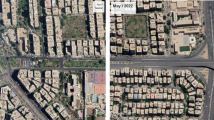Abstract
With the acceleration of the urbanization process, urban waterlogging problems are becoming more and more serious in Nanjing, China. In order to mitigate the urban waterlogging problems, it is necessary to reduce surface runoff from the source by rainwater harvesting and utilization. An urban residential district with an area of 0.58 km2 in Nanjing was selected as the study area. Based on a large-scale topographic map data and the long term rainfall data (1951–2008), the types of underlying surfaces were classified. The potentiality of collectable rainwater and the possibility of runoff volume reduction were calculated. The results showed that exploitation of rainwater harvesting from rooftops and other underlying surfaces has high potential. The annual collectable rainwater is approximately 372,284 m3, 314,034 m3 and 275,180 m3 under different cumulative frequency of rainfall at 20 %, 50 % and 75 %, respectively. The total capacity of cisterns under assumptions of return period of rainfall and rainfall duration with 5 years and 20 min is 11,022 m3. The cistern’s capacity which is used for roof rainwater harvesting is 4,083 m3, the cistern capacity for per unit roof area (1 m2) is 0.0267 m3. The results of the feasibility analysis of setting up above-ground cisterns showed that 55 % of the total roof areas in the study area are available for setting up cisterns. In the three building types, 16 % of the commercial building’s roof areas and 77 % of that of the residential and the “others” buildings are available for setting up cisterns. Urban waterlogging problems can be effectively reduced through rainwater harvesting by 13.9 %, 30.2 % and 57.7 % of runoff volume reduction in three cases of the maximum daily rainfall (207.2 mm), the average annual maximum daily rainfall (95.5 mm) and the critical rainfall of rainstorm (50 mm).


Similar content being viewed by others
References
Appan A (1999) A dual-mode system for harnessing roofwater for non-potable uses. Urban Water 1(4):317–321
Cao SL, Lou PP (2009) Cause of urban flood disasters in Jinnan city. J China Hydrol 29(2):87–89 [in Chinese]
Cara DB, Sharma A, Gardner T, Chong M (2012) A desktop analysis of potable water savings from internally plumbed rainwater tanks in South-East Queensland, Australia. Water Resour Manage 26:1577–1590
Coombes P (2002) Rainwater tanks revisited: new opportunities for urban water cycle management. University of Newcastle, Callaghan
Erokusuz E, Rahman (2010) Rainwater tanks in multi-unit buildings: a case study for three Australian cities. Resour Conserv Recycl 54:1449–1452
Ghisi E, Montibeller A, Schmidt RW (2006) Potential for potable water savings by using rainwater: a analysis over 62 cities in southern Brazil. Build Environ 41(2):204–210
He B, Wang Y, Takase K, Mouri G, Razafindrabe BHN (2009) Estimating land use impacts on regional scale urban water balance and groundwater recharge. Water Resour Manage 23:1863–1873
Herrmann T, Schmida U (1999) Rainwater utilization in Germany: efficiency, dimensioning, hydraulic and environment aspects. Urban Water 4:307–316
Hu MC, Zhang XQ (2011) Analysis of causes of waterlogging disasters in Nanjing. J Chongqing Jiaotong Univ 11(3):28–30 [in Chinese]
Imteaz MA, Shanableh A, Rahman A, Ahsan A (2011) Optimisation of rainwater tank design from large roofs: a case study in Melbourne, Australia. Resour Conserv Recycl 55:1022–1029
Imteaz MA, Adeboye OB, Rayburg S, Shanableh A (2012) Rainwater harvesting potential for southwest Nigeria using daily water balance model. Resour Conserv Recycl 62:51–55
Khastagir A, Jayasuriya N (2011) Investment evaluation of rainwater tanks. Water Resour Manage 25:3769–3784
Kim G, Yur J, Kim J (2006) Diffuse pollution loading from urban stormwater runoff in Daejeon city. J Environ Manage 85(1):9–16
Kim J, Furumai H (2012) Assessment of rainwater availability by building type and water use through GIS-based scenario analysis. Water Resour Manage 26:1499–1511
Lin Y, Hu J (2011) Discussion on the feasible methods of rainwater utilization in landscape designing of residential areas, International Conference on Electric Technology and Civil Engineering, Lushan, China, 22–24 April 2011
Matthew PJ, William FH (2010) Performance of rainwater harvesting systems in the southeastern United States. Resour Conserv Recycl 54:623–629
Ministry of construction of China (2006) Engineering technical code for rain utilization in building and sub-district (GB50400-2006). China Building Industry Press, Beijing [in Chinese]
Rahman A, Keane J, Imteaz MA (2012) Rainwater harvesting in greater Sydney: water savings, reliability and economic benefits. Resour Conserv Recycl 61:16–21
Su MD, Lin CH, Chang LF, Kang JL, Lin MC (2009) A probabilistic approach to rainfall harvesting systems design and evaluation. Resour Conserv Recycl 53(7):393–399
Van Room M (2007) Water localization and reclamation: steps towards low impact urban design and development. J Environ Manage 83(4):437–447
Vialle C, Sablayrolles C, Lovera M, Huau MC, Jaco S, Montrejaud-Vignoles M (2012) Water quality monitoring and hydraulic evaluation of a household roof runoff harvesting system in France. Water Resour Manage 26:2233–2241
Villarreal EL, Dixon A (2005) Analysis of a rainwater collection system for domestic water supply in Ringdansen, Norrkoping, Sweden. Build Environ 40:1174–1184
Zhang J, Cao XS, Meng XZ (2007) Sustainable urban sewerage system and its application in China. Resour Conserv Recycl 51(2):284–293
Acknowledgements
The authors would like to thank this paper’s reviewers for their constructive comments and suggestions, which greatly improved its quality.
Author information
Authors and Affiliations
Corresponding author
Rights and permissions
About this article
Cite this article
Zhang, X., Hu, M., Chen, G. et al. Urban Rainwater Utilization and its Role in Mitigating Urban Waterlogging Problems—A Case Study in Nanjing, China. Water Resour Manage 26, 3757–3766 (2012). https://doi.org/10.1007/s11269-012-0101-6
Received:
Accepted:
Published:
Issue Date:
DOI: https://doi.org/10.1007/s11269-012-0101-6




